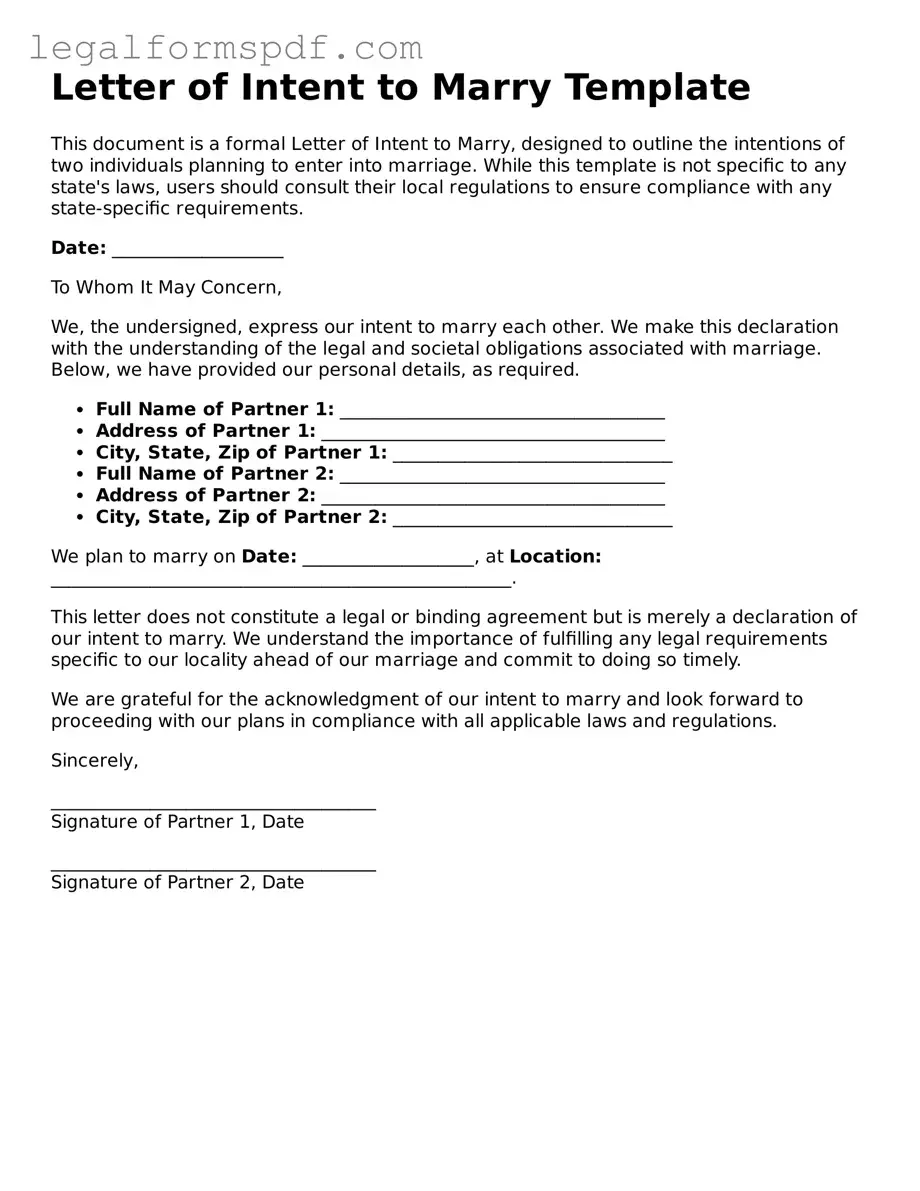Filling out the Letter of Intent to Marry is a critical step for couples who are navigating the process of obtaining a fiancé visa. Unfortunately, some common mistakes can complicate or delay the application process. Recognizing and avoiding these errors is crucial for a smooth journey towards marriage and residency.
One major mistake is not ensuring that both partners sign the document. This might seem obvious, but it's not uncommon for one person to fill out the form and forget to have the other party sign. Both signatures are mandatory, as they signify the mutual intention to marry.
Another error involves not using the full legal names of both parties. Sometimes, couples might use nicknames or omit middle names. However, it is essential to use the full legal name as it appears on official ID cards and passports. This ensures consistency across all documents submitted during the visa process.
Incorrect dating formats can also pose a problem. The United States uses the month-day-year format, which can be confusing for those from countries that use day-month-year. Misdating documents can lead to misunderstandings about the timeline of events, potentially causing delays.
Additionally, some couples fail to mention their plans for the wedding, thinking it might not be necessary. However, providing details about when and where you plan to marry reinforces the genuineness of your intent. Even if plans are preliminary, sharing them can be beneficial.
Not keeping a copy of the Letter of Intent to Marry for personal records is another oversight. Having your own copies ensures you have all the documentation needed for future reference or in case the original submission gets lost or delayed.
There's also the mistake of not tailoring the letter to reflect the couple's unique circumstances. While it's tempting to use a generic template, personalizing the letter can strengthen your case. It shows the officials that you are genuinely committed to marrying and building a life together.
Some applicants mistakenly believe that a Letter of Intent to Marry should be lengthy. However, clarity and conciseness are valued over length. A clear, straightforward expression of your intention to marry is all that's required.
Another common error is not checking for typographical and grammatical mistakes. Such errors can make the document appear unprofessional or rushed. Proofreading before submission can prevent misinterpretations or negative biases.
Assuming that a Letter of Intent to Marry can be submitted electronically without verifying is also a misstep. While some parts of the visa process allow for electronic submissions, specific requirements might dictate that this letter be mailed or submitted in person.
Lastly, a significant error is procrastination in submitting the Letter of Intent to Marry. Waiting until the last minute can create unnecessary stress and lead to mistakes. Early preparation and submission can alleviate pressures and contribute to a smoother process.
By being mindful of these common mistakes and taking steps to avoid them, couples can ensure their Letter of Intent to Marry accurately reflects their commitment and helps facilitate the journey towards marriage and beginning their new life together.
